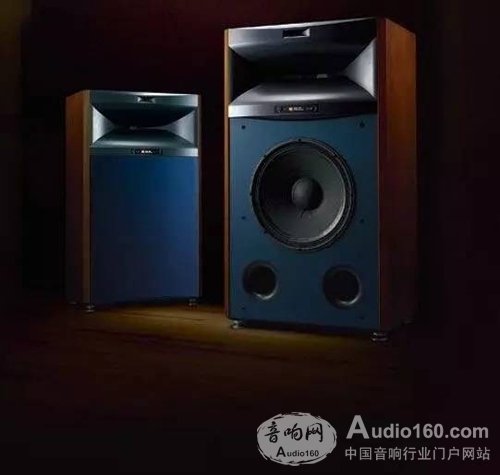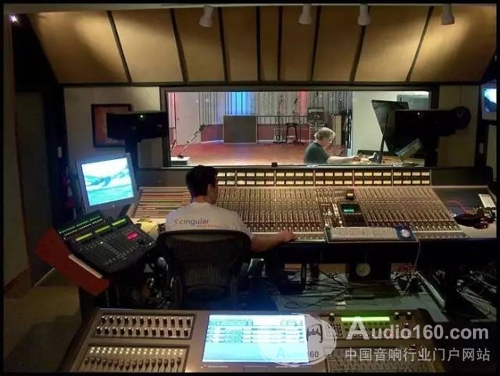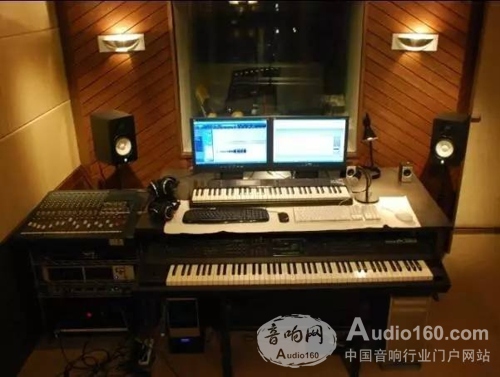Speaking of monitor speakers, many people may have heard it in the professional audio field, which is still very strange. Monitors for viewing, monitoring, controlling, and adjusting sound are not just speakers of superior quality. They are also audio quality monitoring devices for recording, mixing, audio transmission, or any other high-standard application.
So, what is the role of the monitor speakers? how to choose? What should I pay attention to during use?
First, what is the monitor speaker?
The monitor speakers are used for listening to audio studios, recording studios, etc. when making audio programs. It has the characteristics of small distortion, wide and frequent frequency response, clear sound image, and few modifications to the signal, so it can truly reproduce the original appearance of the sound.

Monitor speakers are not very optimistic in the civilian field. On the one hand, most people like to listen to the more pleasing sounds of the speakers, and on the other hand, these speakers are too expensive. The first aspect is actually a misunderstanding of the monitor speakers. It is considered that the monitor speakers are rational and have no charm (we often say that the dyeing and dyeing). In fact, we should consider this issue from the sound source as a starting point. If the recording level is very poor, even the singer is not good, such a sound will not be good to listen to with the monitor speakers. On the other hand, if the level of the singer and the recording work are very good, what happens when such music is played back using the monitor speakers?
Obviously, the monitor speaker is trying to faithfully restore the idea of ​​the music producer. What you hear is what he wants you to hear. Of course, no device can achieve 100% reduction, but try to avoid the distortion of sound and large dynamics is the goal they pursue.
What is the difference between a reference monitor and a normal monitor? Not only does it need to be stable, reliable, and widely accepted, it must also have known controllable characteristics and performance that allow the sound engineer to clearly understand the frequency response it exhibits at a particular listening position and be able to The bars are calibrated to be flat enough. Only in this way can we call the reference monitor.
The average speaker has its own characteristics, such as some sweeter sounds and some more refreshing, but as a recording monitor or a user who wants to reproduce the original sound, this is unacceptable, so they will use the monitor speakers. Generally more expensive than the same level of speakers.
Second, the origin of the near field monitor speakers
About a few years ago, sound engineers and producers mostly relied on large speakers embedded in the wall to listen while recording, and the finished work was repeated with a cheap home speaker or car horn to make the final correction.
Because at that time, the sound engineers thought that if the sounds from these low-quality speakers would be nice, then the finished products would be heard on the radio, or we could hear the feelings of the merchants everywhere on the street. No problem. In other words, use low-quality speakers to simulate the actual listening situation.
Later, for the sake of convenience, the studio began to use small and cheap speakers, put them on the mixer bridge (Meter Bridge), so that the sound engineer can switch the wall-mounted big speakers and this small at any time. Comparing the speakers, the sound engineer's reliance on such a small speaker is getting heavier and heavier, and this small and cheap speaker is the predecessor of the near-field monitor speaker.
Since the use of such small speakers in the studio, the habit of monitoring has also changed. From the large-scale wall-mounted speakers used to record and mix, the wall-mounted speakers are used for recording, and the small speakers are used for mixing. sound. Although the big speakers are better than the small speakers in frequency response and positioning, there are still some recorders who think that the advantages they have discovered from the small speakers will always replace the large Hi-Fi stereo speakers.

It turns out that they are not wrong. Today we can see that most of the albums are made with this improved small speaker, the so-called near-field monitor speaker, while the large in-wall speaker is only occasionally used. Used by the producer or after the final verification after the album is completed. The roles of the two are subtly adjusted.
The famous trumpet designer Ed Long is the first person to explain the reason for this role. Long's observation and explanation are:
The position of the near field monitor speaker is closer to the sound engineer. In other words, the amount of sound directly injected into the ear (Direct Sound) is much more than the amount of reflection through the wall, floor, etc. (Reflect Sound), so the speaker The design avoids blurring due to environmental reflections, that is, they are more representative of the details of the music, and because their sound pressure (SPL) is usually low, hearing fatigue caused by long-term listening can be avoided.

From this we can know that the sound engineer is sitting in the "near field" range of this kind of speaker, in order to hear superior and clear music, so the so-called near-field monitor speaker, the name has actually described when listening to such a speaker. Basic needs to pay attention to.
Third, how to choose near-field monitor speakers
Near field monitor speakers have several prerequisites, flat and wide frequency response (Flat Frequency Response), linear phase characteristics (Linear Phase Charastics), ability to withstand high peak level (High Peak Level), ideally, should There is also a Protection Circuit to avoid damage caused by abnormal conditions. There are many different near-field monitor speakers on the market that meet the above conditions, but with varying degrees of difference, and looking at their specifications can narrow down the range of your choices, paying attention to some of their characteristics when viewing:
1. Is it anti-magnetic?
2. Is there a bass reflex hole or a closed speaker?
3. Active crossover or passive, the frequency of the crossover point?
4. Is the tweeter mono-conical or dome-shaped?
5. Is the woofer one or two, the size of the single?
6. Two-way split or three-way split?
7. Average sound pressure value and withstand sound pressure?
8. Peak power and output power?
9. Frequency response curve?
10. Do you have a power amplifier or an external device?
These selection points can provide you with some reference when purchasing, of course, depending on the purpose.
Cable Management,cable organizer,wire management,cable cover wall
NINGBO UONICORE ELECTRONICS CO., LTD , https://www.uonicore.com